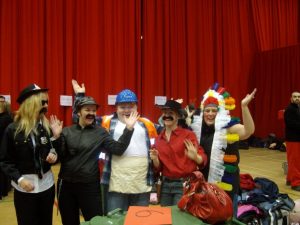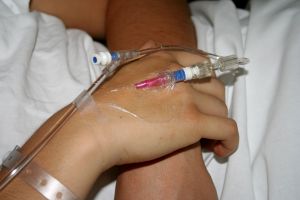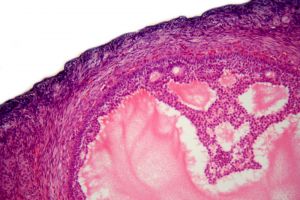Welcome to the February edition of the makeabigdifference newsletter, Impact Young Heroes’ very own one stop shop for all of our latest, news and events. In this edition we continue to look at statistics and facts about the common cancers affecting young people.
Absent from this months newsletter is Katie’s Corner, but worry not, Katie is taking is well deserved holiday and will be back next month discussing the physical changes a young person with cancer faces when undergoing treatment.
You can also read about a group of brave individuals who braved the North Sea in freezing temperatures along with a lady prepared to run 26 miles in support of Young Heroes.
It’s truly overwhelming when people chose to fundraise for our charity and we are so grateful for the support and commitment people show.
February is the month we are launching an urgent appeal to reach out to generous individuals, companies and organisations to support more young people in 2010We desperately need funds, in order to arrange support programmes (including respite breaks) and we can only do this with your help and generosity.
Until next month,
Kim Tetlaw
Editor
Keep on running
On Sunday the 18th of April 2010 the first ever Brighton Marathon will be taking place.
We wish Trudie the very best of luck with the marathon and look forward to reporting and revealing photo’s in April’s newsletter.
Nippy Dipping
Whilst the majority of us sat cosily watching tv and eating left over turkey on Boxing Day, a group of very brave fundraisers took to the freezing waters of the North Sea in what has become a famous and 35 year tradition in Sunderland.
The Seaburn Boxing Day Dip, organised by the Sunderland Lions Club, attracts several hundred participants each year raising tens of thousands of pounds for different charities.
Donna Binyon, Emma Swainston, Stephanie Stubbs and Claire Edmonds all from Sunderland, chose Young Heroes as their nominated charity for 2009 raising a fantastic £600 to date. The girls, who are no strangers to the local tradition, have all previously done ‘the dip’ successfully raising money for MacMillan Cancer Care so Young Heroes feel particularly privileged to have been selected for their 2009 dip.
Battered by snow blizzards, icey waters and plummeting temperatures, conditions were particularly gruelling on boxing day however it didn’t stop the hundreds of revellers, young and old racing into the freezing sea, neither did it stop Donna and the rest of the girls who were humorously dressed as the The Village People.
Whilst Donna and the team didn’t need to do any preparation or training for the event, they, along with all the other participants came face to face with local firemen who hosed them down with cold water to prepare their bodies for the sub zero water temperature.
Once hosed down the girls bravely ran into the awaiting sea for a couple of minutes. With surrounding groups splashing and jumping in the water it wasn’t long before the girls were totally soaked and subsequently began to feel the effects of the icey temperates. Crowds lined the beach shouting their support and cheering everybody on, while emergency services were on stand by for possible incidents.
Finally the Village People made their way back to shore where they dried off and warmed up with much welcomed hot drinks and mince pies and later that morning all participants were presented with a certificate for their achievement.
On behalf of Young Heroes I would also like to congratulate the girls for their brave achievement and thank them for choosing our charity to raise money for.
It is not too late to sponsor the team and you can do so safely and simply online by visiting:
Cancers which are most common in children and young people (continued)
Welcome back to the final instalment of this two part special, highlighting some of the cancers which are most common amongst young people and factual information including statistics, common myths and treatments.
Research indicates that adolescent growth spurts, hormones and other growth and development factors are amongst the most probable causes of cancer that affect young people and whilst cancer amongst adolescents is classed as rare, the relatively small number does not accurately convey the huge impact this disease has on them, their families and society.
Lymphoma
- Lymphoma is a group of cancers that affect the cells that play a role in the immune system and primarily represents cells involved in the lymphatic system of the body.
- Just as cancer represents many different diseases, lymphoma represents many different cancers of lymphocytes-about 35 different subtypes,
- Lymphoma is the most common blood cancer and the third most common cancer among children.
- There are two main types of lymphoma, called Hodgkin’s lymphoma and Non Hodgkin’s lymphoma (NHL).
- It is only possible to tell the difference between Hodgkin and non-Hodgkin lymphomas, when the cells are looked at under the microscope.
Hodgkin’s Lymphoma
- Hodgkin lymphoma (HL), also known as Hodgkin disease, is a less common form of lymphoma.
- Hodgkins Lymphoma has a very high cure rate, especially in younger patients diagnosed with early stage disease. In this group the cure rate may approach 100%. For older people over the age of 50, the cure rate is around 75-80%.
- Most cases occur in patients between the ages of 15 and 35 years
- There are about 1500 new cases of Hodgkin’s disease every year in the UK
- The treatment of Hodgkin’s disease normally involves radiotherapy, chemotherapy or both.
- The commonest place for Hodgkin’s lymphoma to be noticed is in the lymph nodes in the neck.
- Hodgkin’s disease was named after the doctor who first recognised it in 1832 – Thomas Hodgkin. It is now called Hodgkin’s lymphoma.
- Hodgkin’s lymphoma affects more men than women.
Non Hodgkins Lymphoma
- It may seem like a strange way to name an illness, but non-Hodgkin lymphoma simply means any lymphoma that is not Hodgkin lymphoma.
- Around 9500 cases of non-Hodgkin lymphoma are diagnosed each year in the UK. About 80 of those are children.
- Non-Hodgkin’s lymphoma is the sixth most common cancer in the UK. It accounts for between 3 percent and 4 percent of all cancers.
- The most common place for it to be noticed first is in the lymph nodes in the neck. It is quite common to find it in the liver or spleen. But it can occur in other body organs as well.
- If rates of non-Hodgkin’s lymphoma continue to rise at the current rate, it is estimated that it will be as common as breast or lung cancer by 2025
Testicular Cancer
- Although testicular cancer is actually rare, overall it is the most common cancer in males ages 15 to 35.
- Testicular cancer is almost always curable if it is caught and treated early.
- Young men should learn how to examine their testicles regularly to detect any abnormal lumps or bumps, which are usually the earliest sign of testicular cancer.
- Around 2000 men a year are diagnosed with testicular cancer in the UK.
- For unknown reasons, Caucasians are four times more likely than non-Caucasians to have testicular cancer
- The type that tends to affect teenagers is a testicular cancer called teratomas. They can start from the age of 15 upwards
- There is no link between testicular cancer and injuries and sporting strains or even hot baths.
- There are two main types of treatment, surgery and chemotherapy. Most need a combination of both treatments.
- In teenagers and young men, however, the incidence may be as high as one in 10,000.
Germ Cell Tumours
- Germ cell tumours are growths that arise in young children and teens, as well as adults.
- Germ cells develop into the reproductive sex organs – testicles in guys and ovaries in girls. Germ cells can travel to other areas of the body, such as the chest, abdomen, tailbone, or brain.
- Germ cell tumours are rare; only 2.4 children out of 1 million will develop a germ cell tumour each year.
- They make up only 4% of all cancers in children and adolescents less than 20 years of age.
- Germ cell tumours can be malignant (life-threatening) or benign (not life-threatening).
- The most common germ cell tumours are teratomas or seminomas of the testicle in men. In women, about 1 or 2% of ovarian cancers are germ cell tumours.
- Germ cell tumours generally respond very well to chemotherapy and most patients are cured
Driving success for young hero
I am pleased to announce that last month newsletter columnist and Young Heroes volunteer Katie Brooman passed her driving test.
I know passing her driving test meant so much to her and she felt it was an important step towards regaining her independence so we are absolutely thrilled for her and wish to take this opportunity to once again congratulate Katie.
Well Done!
Fundraising idea of the month
Book Club
Book Clubs are easy to start and lot of fun, so if you love books, this is for you!
They allow you to share your passion for literature, learn new things and meet new friends. But how do you start your own book club and how can you turn it into a successful fundraiser month after month?
How to start your own book club
You can draw members from any part of your social circle: family, friends and/or co-workers. Smaller groups (somewhere between four and ten) are great because they allow everyone a chance to participate, while larger groups (ten-plus) allow for greater diversity.
One of the benefits of a reading group is that it allows you to discover new authors, topics and genres.
How to choose your books
You can choose your books a number of different ways:
- By selecting titles a year at a time
- If a different member hosts the meeting each month let that person select that title
- Let everyone bring a selection of titles to a meeting and have a vote
- Have everyone bring in one or two selections and draw them out of a hat
- By asking the local library to draw up a list of recommended reading
How to set up the meeting
For the first meeting give the members 4 – 5 weeks to read the book
Pick a regular monthly date to make scheduling easier e.g. the first Wednesday of the month
Allow 2 to 3 hours for each meeting.
Each meeting should have a leader, or there can be a leader who’s in charge every month. This leader will be in charge of keeping everyone organised, such as sending emails to remind everyone of when and where the next meeting takes place.
Make sure you have several discussion topics or questions beforehand. Look the title up online to see if a reading group guide exists and take a print out to the meeting to refer to. As you’re reading, it might be helpful to write down the page numbers of any passages that interest you.
How to conduct the meeting
Each discussion needs a leader.
The discussion leader’s role is to make sure discussion flows, not too much time is spent on any one topic, and that all members get a chance to speak.
The discussion leader can research interesting, lesser-known facts about the author and/or the book’s setting, time period, etc., and then share with the group.
How to make it a successful fundraising event
Book clubs are always free but there are plenty of other ways to raise money for charity. For example; when hosting your meeting, you can sell refreshments for a small fee. You could also host a dinner and have the book discussion afterward over coffee and dessert.
If you’re able to work out a deal with a local bookseller and get copies of books at a discount, offer the books for sale to the club members for a little more than your group paid with the proceeds going to Young Heroes.
Raise even more money by having a group member or two babysit for those people who want to participate, but have small children.
Sponsors Needed
Young Heroes offers support to young people who are living with, or are affected by cancer and this support sometimes includes a respite break. Young Heroes are urgently appealing for individuals, companies and groups to sponsor a young person living with cancer so they can be supported and potentially enjoy a dream break; at a time when they most need it.
Support and respite, truly make such a difference not only to the young person but their loved ones who have so heartbreakingly had to watch their son or daughter battle through their illness providing a much welcome relief from the stresses of daily life and the space and time to reflect away from difficult times.
Respite care breaks offer families the chance to re-energise, regroup and help fight the disease together, while sadly for others, it offers them the last chance for a memorable break. This is why it is so important for Young Heroes to be able to offer the breaks along with ongoing support services they may not receive elsewhere.
Each break costs £2200, we rely on the kind donations from individuals, corporate sponsors and fundraising events to fund the respite breaks. We currently receive no help from trusts or foundations to fund respite breaks so your donations are vital.
Please make a big difference today.
For further information please call Sharon or Kim on 01142 43 18 50
Thank you
Young Heroes would like to thank Christa Greswold for her kind donation of £40 last month. Christa is the musical director of Saxophony who have fundraised for the charity on previous occasions. Thank you for your donation and of course your continued support.
We would also like to thank Amy and Tom Hunt, along with Jenny Mitchell for their donations made through their Smartie tube challenge. Your support is much appreciated.
Young Heroes says a ‘big thank you’ to kind individuals, who donate £2, £4, £5, £10 and £15 per month. These donations are essential to support young people and we know that the young people; who benefit from your support, are very grateful.
Click here for more information on how to donate on a monthly basis
NORTH EAST GUITAR CLUB
Presents
CHARITY CONCERT
IN AID OF
Impact Young Heroes
AT – VANE TEMPEST SOCIAL CLUB
ON
MARCH 27th – 7.30 pm
FEATURING
THE KLASSIX
(‘50’S; ‘60’S: 70’S ROCK & ROLLL: COUNTRY)
SUPPORTED BY
SHILOH
(‘50’S: ‘60’S: ‘70’S: ’80’S: ’90’S- FOLK:
BLUEGRASS: ROCK & ROLL: COUNTRY: HEAVY METAL)
TICKETS- £2.00 CONTACT: Paul – 07588870597





